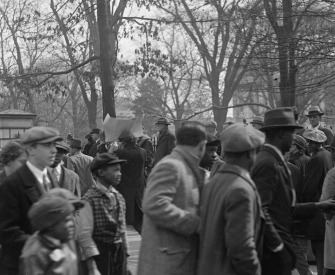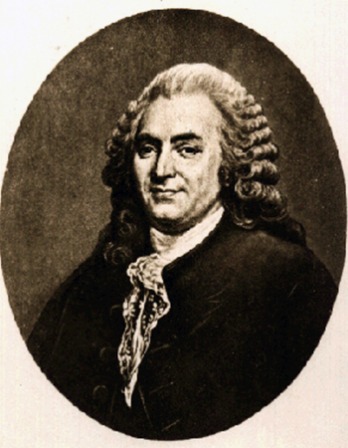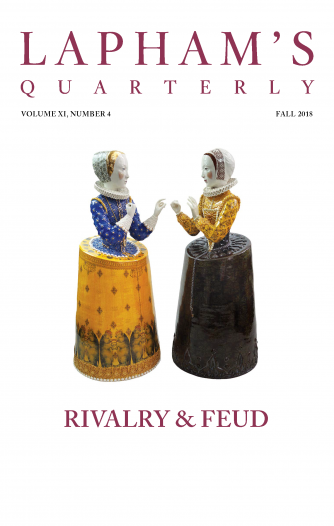Death from the bubonic plague is rated, with crucifixion, among the nastiest human experiences of all.
—Guy R. Williams, 1975Signs and Wonders
Reading the literature of past plagues and suddenly seeing our present reflected in a mirror.
By Francine Prose
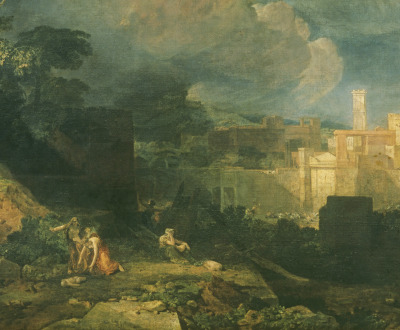
The Tenth Plague of Egypt, by J.M.W. Turner, 1802. © Tate, London / Art Resource, NY.
Near the end of Death in Venice, the narrative takes a sharp turn and veers from a close third-person point of view into straight-up exposition, as if to circumvent our hero’s blinkered consciousness and deliver the bad news that he has so far refused to acknowledge: Venice is overrun by cholera. To remain in the city would be fatal, as it turns out to be for Gustav von Aschenbach, immobilized and doomed by his obsession with a beautiful Polish boy.
Thomas Mann’s 1912 novella was a favorite among my high school friends, teenagers attracted to the swoony gothic miasma of disease-ridden Venice, to the idea that a rogue, unrequited love might prove stronger than the fear of death, and to the romance of a plague stalking its victims through the dark alleys and along the fetid canals. Only now, reading this issue of Lapham’s Quarterly, I’m struck by a passage that I must have overlooked, then and in subsequent readings:
At the beginning of June, the pesthouse of the Ospedale Civico had quietly filled…and a frightfully active commerce was kept up between the wharf of the Fondamenta Nuove and San Michele, the burial island. But there was the fear of a general drop in prosperity. The recently opened art exhibit in the public gardens was to be considered, along with the heavy losses that in case of panic or unfavorable rumors would threaten business, the hotels, the entire elaborate system for exploiting foreigners—and as these considerations evidently carried more weight than love of truth or respect for international agreements, the city authorities upheld obstinately their policy of silence and denial. The chief health officer had resigned from his post in indignation and been promptly replaced by a more tractable personality.
If this passage seems remarkable now, it’s not only because I’m no longer tempted to romanticize death or because I’m more aware of how often the powerful prioritize profit over human life—but because I am reading it in 2020, in the midst of the Covid-19 pandemic. I’ve been observing what Mann so succinctly describes: the criminal relationship between public health, capitalism, greed, and unconscionable lying. Concerns about Covid-19’s impact on tourism and the travel industry have been wafting through our newly poisonous atmosphere. Fears about the economic fallout have accelerated the disease’s transmission, as we have repeatedly watched the truthful and conscientious silenced and replaced by the dishonest, cowardly, and compliant.
So much of what we read—of how we read—is affected by our circumstances, by where and when we are reading. What’s so startling about the texts and images in this issue is that they seem less like glimpses through the lens of ancient history, less like gazing at distant worlds through a window fogged by time, than like catching a clear, unnerving glimpse of our world, right here, right now. Reading these passages feels a little like turning a corner and—suddenly, shockingly—seeing our face, reflected in a mirror.
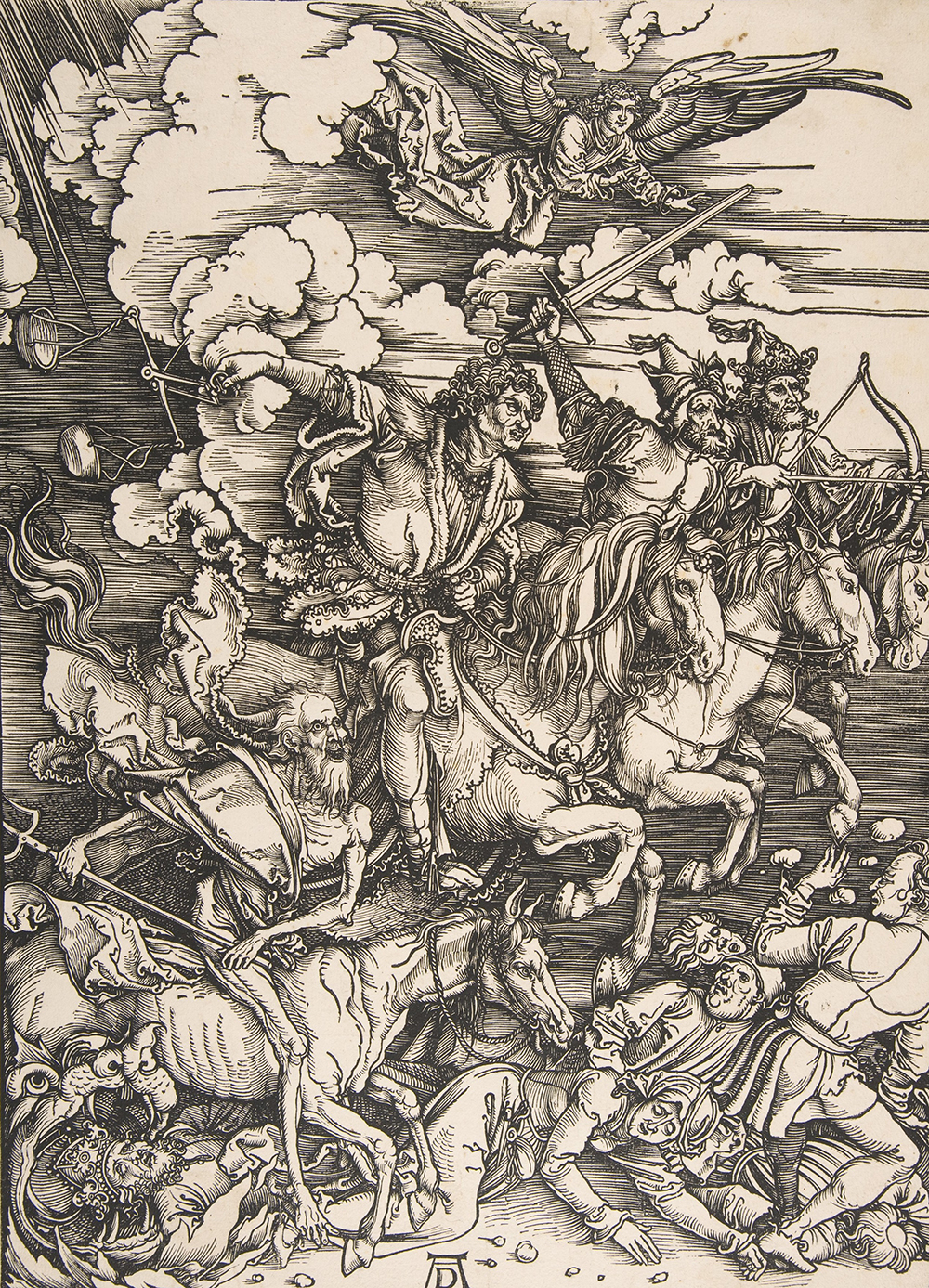
The Four Horsemen of the Apocalypse, by Albrecht Dürer, c. 1497. The Metropolitan Museum of Art, gift of Mrs. Felix M. Warburg, 1940.
Given the familiar routines of life in quarantine, it’s eerie to read
Daniel Defoe’s re-creation—written more than fifty years after the fact—of what the Great Plague of 1665 must have been like. After his doctor scolds him for crossing plague-infested London to witness the mass burials, Defoe’s narrator agrees to stay home with his family and adopts all the middle-class safety rituals that we have come to know so well: “I went and bought two sacks of meal, and for several weeks, having an oven, we baked all our own bread.” He brews enough beer to last five or six weeks, stores up butter and Cheshire cheese. Grocery shopping is a problem, especially for the poor. No one touches money, coins are disinfected in vinegar, and people carry bottles of perfume presumably as a disinfectant but also to ward off the stench of death.
Given the grim statistics that tell us who has suffered most from Covid-19, it’s similarly unnerving to see
Friedrich Engels so clearly lay out the ways in which illness, like wealth, is unequally distributed: “All conceivable evils are heaped upon the heads of the poor. If the population of great cities is too dense in general, it is they in particular who are packed into the least space [and] are worked every day to the point of complete exhaustion…And if they surmount all this, they fall victims to want of work in a crisis…How is it possible, under such conditions, for the lower class to be healthy and long-lived? What else can be expected than an excessive mortality, an unbroken series of epidemics?” And the poet Ibn al-Khatib’s circa 1360 observations on plague transmission closely prefigure what we know today: “The disease can make its first appearance in a single house of a given town, then spread from that focus to other persons—neighbors, relatives, visitors…Many people remained in good health who kept themselves in isolation from the outside world.”
This issue of Lapham’s Quarterly reminds us of how long and how fiercely we have been fascinated by plagues: the range of repellent symptoms and catastrophic mortality rates, the origins, modes of contagion, durations, remissions, recurrences, the warnings and surprises. Survivors, like Pliny the Elder, have described the carnage, while others, like Defoe, have imagined, from a safer distance, how it must have been.
Meanwhile we, the lucky ones, until now largely unaffected by mass disease, have been the reluctant or avid audience for these historic spectacles of death and destruction. For pandemics are nothing if not spectacular, gladiatorial battles on a global scale.
Just before the Nile is transformed into a river of blood in the book of Exodus, God tells Moses that he is about to unleash the ten plagues, a display of God’s “signs and wonders.” And so the plagues rained down on the Egyptians like a fireworks display, culminating in the killing of all firstborn sons, the grand finale when the cannons boom and one flash follows another. Epidemics still seem like manifestations of signs and wonders, even after we have learned that the wizard behind the curtain is a virus instead of God’s wrath. We still watch the unfolding horrors with dread and awe.
Reading about past pandemics—the mass graves, the wagonloads of corpses, the refugees dropping in their tracks en route to safety, the ships sailing into port manned by dead or dying sailors—offers its own grisly sort of theater, its own mix of terror and titillation. Plagues are history’s disaster films, epics with casts of millions, though with real people dying real deaths and seeing loved ones perish. At moments, it can seem like the literary-historical equivalent of watching many centuries’ worth of horror-film trailers. Whether or not we admit it, the sheer awfulness of these accounts excites a normally—and mercifully—quiescent lobe of the limbic brain.
Even the most tenderly empathic of us may feel a thrill of queasy excitement when, in the film World War Z, masses of zombies, swarming like maddened bees, scale and tumble over the wall that has been protecting Jerusalem. Reduced to creatures of pure instinct, we—like our hero, played by Brad Pitt, and the crowds of extras—can only panic and run. Richard Preston’s horrific narrative about the slaughter of monkeys exposed to the Ebola virus at a Virginia research facility seemed like a film treatment, until I recalled that I had seen it, in a TV miniseries. Or maybe I was thinking of all the other films in which nightmarish health and safety problems erupt as a consequence of some unfortunate science-lab mistake.
The epic scale, the drama, the wide lens narrowing for close-ups on individual tragedy and on scientists’ determined frowns are so cinematic, it’s no wonder that so many epidemics have found their way onto the screen. They range widely, from Pier Paolo Pasolini’s 1971 The Decameron—a brilliant meditation on death, sex, greed, religion, and the sources of great art—to the popular 2011 thriller Contagion, in which we watch the human race all but destroyed by a virus that Gwyneth Paltrow picks up in Macau after shaking hands with a chef whose hands are contaminated with pig blood. With indoor movie theaters closed by the lockdown, we can still stream Steven Soderbergh’s prescient film, and it’s an unsettling experience: a succession of all-too-familiar rumors and reports, with many small, ominous moments culminating in major disaster. We watch the virus spread, cough by cough, from drinking glass to drinking glass, followed by the ugly deaths, the food hoarding, the looting, the profiteering, the fake cures, the scrambling to develop a vaccine. Clearly Soderbergh did his homework—it makes sense that he’s heading the Directors Guild committee on how to reopen the film industry after (or during) the Covid-19 pandemic.
It’s hard not to notice how closely the present moment resembles dystopian science fiction. Getting tested for Covid-19 in Kingston, New York, in June 2020 means driving through a series of ghostly white tents set up in a deserted parking lot the size of a football stadium. Like sinister hybrids of wedding tents and car washes, the tents feature giant fans; in each a pair of workers in hazmat suits motion for you to keep your windows rolled up until it’s time for the swabs. It’s a little like wandering through Petrarch’s post-plague world, with “a fearful and universal solitude over the whole earth,” and onto the set of a disturbing film about the future: a journey along the bleak corridors of Alphaville, across the dying planet of The Man Who Fell to Earth, into the stark, inhospitable chambers of 2001: A Space Odyssey.
Like warfare, plagues are entertainment until they happen to us. They remain at once oppressive and oddly abstract until we or a loved one gets sick. How many times a day do we check our device for news of the latest signs and wonders?
A strange child, a no less strange adolescent, I was semi-obsessed by plagues. The romance between Romeo and Juliet interested me far less than the outbreak of plague that keeps Friar Laurence from preventing the lovers’ double suicide. My favorite part of my great-aunt’s Passover seders was the opportunity to meditate, at length, on the medieval woodcuts in the Haggadah illustrating the ten plagues: images so primitive, stark, and blurrily reproduced that one could hardly tell the boils from the locusts or figure out (I never did) what murrain was exactly.
I grew up during the polio epidemic, before the advent of the Salk vaccine. I remember photos of stricken children, their sad little faces protruding from massive iron-lung machines. I don’t recall worrying about getting sick—just that it was annoying to be kept away from playgrounds, movie theaters, and public swimming pools—but my parents must have been terrified. A family vacation on Cape Cod was suddenly cut short when I developed a high fever. My mother begged my father to slow down as we raced home to see the family pediatrician—unnecessarily, because I’d recovered by the time we got back. Did I think I’d been saved from a horror? I thought I’d lost a chance to swim in the ocean.
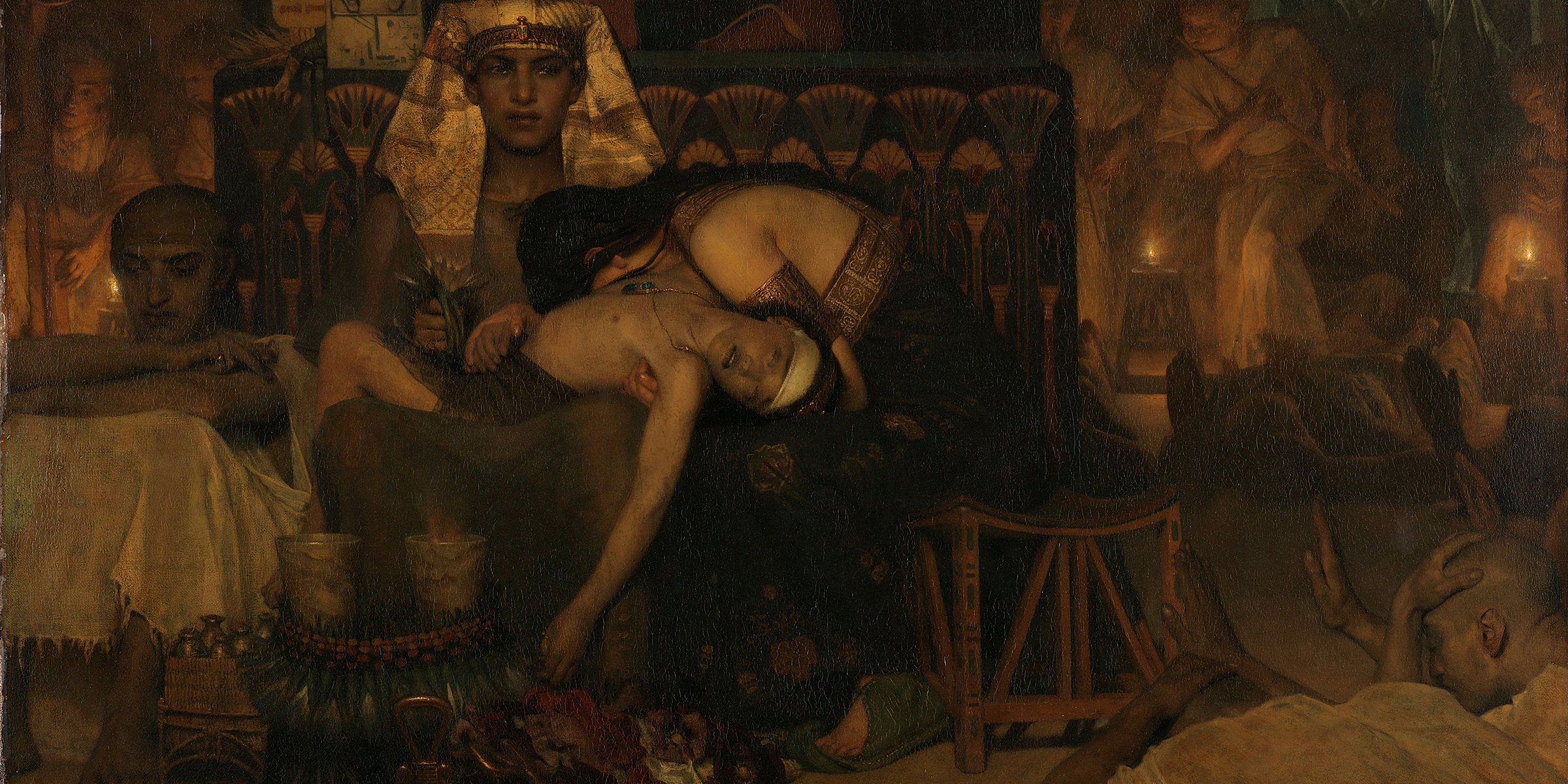
The Death of the Pharaoh’s Firstborn Son (detail), by Lawrence Alma-Tadema, 1872. Rijksmuseum, gift of the heirs of L. Alma Tadema.
Books about lifesaving medical discoveries and outbreaks of illness tracked to their origins by epidemiologists—among them, Paul de Kruif’s Microbe Hunters and Berton Roueché’s excellent Eleven Blue Men—were popular in this country in the mid-twentieth century, and were especially beloved in our house. Both my parents were doctors.
One of my favorite books was Devils, Drugs, and Doctors by Howard W. Haggard, MD, first published in 1929 and reissued, in the edition I must have read, in 1953. Subtitled The Story of the Science of Healing from Medicine-Man to Doctor, the book appears to have been intended as a record of medical breakthroughs and triumphs: the discovery that if doctors washed their hands between deliveries, women could be saved from dying in childbirth; the early uses of anesthesia; the work of Louis Pasteur. But to me these victories seemed tepid and unremarkable compared with the monumental failures, the humbling rebukes that microbes regularly delivered to science. I read and reread the passages about the plague that, beginning in 164, raged for sixteen years and recurred for centuries after; in the fourteenth century, plague killed between a third and two-thirds of the population of Europe. I read about leprosy, diphtheria, typhoid, Saint Anthony’s fire, and malaria, which—almost a century after Haggard’s book appeared—continues to afflict over 200 million people a year.
Perhaps part of my interest in Haggard’s book came from the fact that my parents—later so disappointed when I refused to study medicine—were so encouraged by my interest, so eager to talk about what I’d read. The discussion I remember most clearly involved my asking exactly how people contracted syphilis and gonorrhea. Rereading it now, I find that Haggard’s chapters, though discreet, are not entirely uninformative; there is a rather long digression about the history of prostitution. But the explanation wasn’t clear to me then. Or maybe it was perfectly transparent, and I just enjoyed putting my parents on the spot, forcing a conversation we hadn’t yet had. Now, of course, anyone old enough to read such a book thinks she knows more about sex than her parents—but that was a more innocent time. Sensibly realizing that this might not be the ideal context for early sex education, my father told me that people contracted those diseases from “running around”—an embarrassed bit of avoidance, a seemingly harmless 1950s euphemism with unintended consequences. For some time, I remained on the sidelines at recess—until I got bored or somehow figured out that people didn’t catch venereal disease from playing dodgeball.
I hadn’t thought about that incident much until just recently, when Susan Sontag reminded me of how often plagues have been seen as agents of moral judgment, punishment for the sins—in particular the sexual transgressions—of its victims. I remember, in the 1990s, ministers and evangelists blaming the “homosexual agenda” for the spread of HIV/AIDS and appearing to take righteous pleasure in the misery of the afflicted. Running around again came to mind as I read the 1869 statement of the Ladies’ National Association for the Repeal of the Contagious Diseases Acts—a series of laws designed to punish prostitutes, but not their clients, for the spread of “contagious diseases, to which both men and women are liable.” And what had these unfortunate women—arrested, forced to submit to a medical examination, imprisoned, sentenced to hard labor—done to deserve their harsh fate? Along with the nonjudgmental spirochete, they must have been running around.
I would have loved this issue as a child. But reading it now is entirely different, again not just because I am older. In the midst of a pandemic, one searches for reflections, correspondences, for the threads tying past to present, for major and minor variations. It’s a challenge to read
Willa Cather’s account of a plague that breaks out on board a ship without the words Diamond Princess going through one’s mind—though the travails of the Covid-19-infested cruise liner stranded off Japan in February 2020 seems not to have included the ritualistic ocean burials that punctuate Cather’s fiction. Jack London’s doomsday vision captures the apocalypse we now fear at our lowest moments.
Other concordances go deeper than isolated incidents or imaginative projections. Perhaps one reason for the onetime urban ritual of evening applause for medical personnel working with Covid-19 patients is that plagues don’t necessarily (or historically) bring out the best in human nature. In times of crisis, a flaw in our design prompts us to look around for something or someone to blame, usually someone from another ethnic, racial, or religious group. America’s leaders have deployed the term Chinese virus to deflect responsibility and stir up hatred against Asia and (collateral damage) Asian Americans. Carlo Ginzburg describes the burning alive of lepers and Jews accused of poisoning a well, a wicked trick to set off the plague in fourteenth-century France. Those murders were hardly isolated incidents. Though Pope Clement VI informed the faithful that a devil was inspiring them to accuse Jews of causing the plague, two thousand Jews were brought to the cemetery of Strasbourg, and all, excepting those who agreed to convert to Christianity, were burned at the stake. And we can always blame science: those films tracking outbreaks to laboratory mistakes were echoed by a brief attempt to claim that the novel coronavirus originated in a lab in Wuhan, China.
If they prescribe a lot of remedies for some sickness or other, it means that the sickness is incurable.
—Anton Chekhov, 1904The protesters who claimed that the cure of lockdown was worse than Covid-19 and pressured state governments across America to “open up” have their predecessor in
Charles Maclean, writing in 1824, “The dread of an unknown, mysterious, imaginary, and incomprehensible agency, from which we every moment apprehend destruction, is necessarily more fatal in its effects than that of…a real and known contagion.”
Maclean seems to have been especially upset by the fact that quarantine was state sanctioned, a reminder of the variant effects of good and bad governments. In Exodus, the pharaoh provides an early—and resonant—model of the wrong way to avoid an epidemic, an exemplar of bad decisions, false assurances, broken promises, and catastrophic consequences. When Moses and his brother, Aaron, make the Nile run red with blood, the pharaoh, instead of taking action, “turned and went into his house”—a detail that, for me, conjured up the image of Donald Trump stalking out of the Rose Garden when an Asian American journalist inquired why he had told her to “ask China” why Americans were dying of Covid-19.
As in Death in Venice, governments often initially refuse—for political and economic reasons—to admit that an outbreak has begun. In Alessandro Manzoni’s The Betrothed, the governor ignores the dire warnings of his emissaries and the accumulating deaths, ordering a public celebration of the birth of Prince Carlos: “The famine of the previous year, the bullying of the soldiers, and the afflictions of the spirit were considered more than sufficient explanation for the mortality rate. In the public squares, in the workplace, or at home, anyone who dared to hint at the danger, who attributed the deaths to the plague, was treated to angry contempt and jeers of disbelief. The same disbelief, or rather the same blindness and obstinacy, prevailed in the Senate, in the City Council, and in the mind of every magistrate.”
Less common are the instances in which a leader takes quick decisive action. An 1892 report enumerates a typical series of mistakes and oversights, then goes on to record the rather astonishing information that the president of the New York Board of Health traveled to Fire Island himself to make the first payment on a hotel bought to quarantine the passengers from two ships known to be carrying cholera. How sensible, we think, were the regulations imposed in the lazaretto that
Isolation Wards visited in the 1780s: “The quarantine of passengers who come with a foul bill, or in one of the first two ships from the same place with a clean bill, is thirty-one days.”
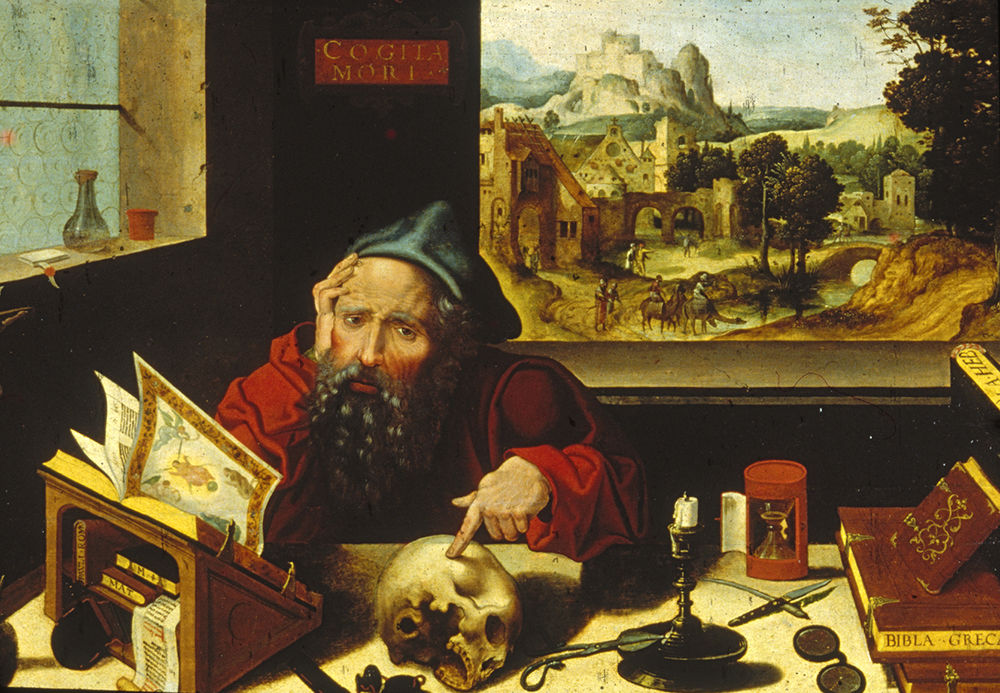
Saint Jerome in His Study, by Pieter Coecke van Aelst, c. 1550. The Walters Art Museum, acquired by Henry Walters.
Especially memorable are intense first-person accounts of how it feels to be afflicted or surrounded by disease, reminding us that plagues are not abstractions, not morbid entertainments. The movie star Gene Tierney tells the straightforward—and devastating—story of how, early in her pregnancy, she contracted German measles from a passionate fan and how the disease caused her child to be born with severe brain damage. A more lyrical and metaphorical stylist, the writer and painter David Wojnarowicz describes how, during the AIDS crisis, his “friend wakes up and starts weeping; he’s hallucinating that he can’t find something that probably never existed. I understand the feeling, just like I understand it when he sometimes screams that he hates healthy people.”
Can anything good come out of this? We hope, without much hope, that even after we learn how to prevent or treat Covid-19, the sky will remain as clear and unpolluted as it has been during the lockdown—a prospect made more unlikely by our government’s rollback of environmental restrictions even as quarantine distracted us. Or perhaps we can find encouragement in reports such as Karl Taro Greenfeld remembering how the 2003 SARS virus grew steadily weaker until “the viral spell broke; Hong Kong seemed to wake from a fever dream.”
’Tis a portentous sign / When a man sweats and at the same time shivers.
—Plautus, 180 BCPerhaps one example of something good evolving out of an epidemic can be found in the school of painters that came of age in the Italian city of Siena after an entire generation of artists was wiped out by the bubonic plague. There were geniuses among the ones who died (most notably, Ambrogio Lorenzetti), but their successors—Taddeo di Bartolo, Giovanni di Paolo, the Master of the Osservanza—were, in my view, more gifted and profound than their forebears. You can see the awareness of mortality in every tree that the Osservanza Master painted.
In A Month in Siena, a book-length meditation on looking at Sienese art, Hisham Matar considers the ways in which the Renaissance emerged from under the shadow of the plague. And at the end of The Decameron, Pasolini gives the last word to an artist, “one of Giotto’s star pupils,” played by the director himself; in the final scenes, a painting he’s been laboring over is finally finished.
I’ve heard it suggested that plagues represent nature’s crude effort at population control, that contagion and mass death constitute an epidemiological housecleaning of sorts. After the plague comes the clean slate, the new leaf, the Renaissance. But it goes against our grain to want to be part of the dust.
To think about epidemics is to consider questions of life and death, of nature and human nature, to admit the existence of something that returns and returns and returns. Despite us, despite science, despite everything we have learned over the centuries, the threat and the reality of the pandemic refuses to disappear.
Returning to Albert Camus’ The Plague recently, I was shocked by an obvious truth: “Everybody knows that pestilences have a way of recurring in the world; yet somehow we find it hard to believe in ones that crash down on our heads from a blue sky. There have been as many plagues as wars in history; yet always plagues and wars take people equally by surprise.”
Of course. Of course he’s right. And it makes us wonder: What other surprises do nature and history have in store? What has happened, and happened again, and will happen again, despite how hard we try to convince ourselves that it can’t happen here?
